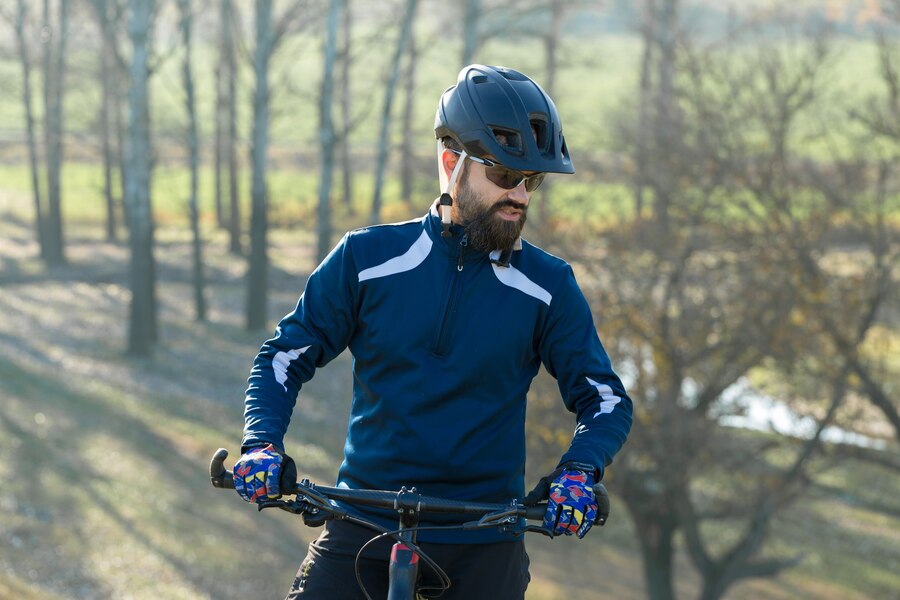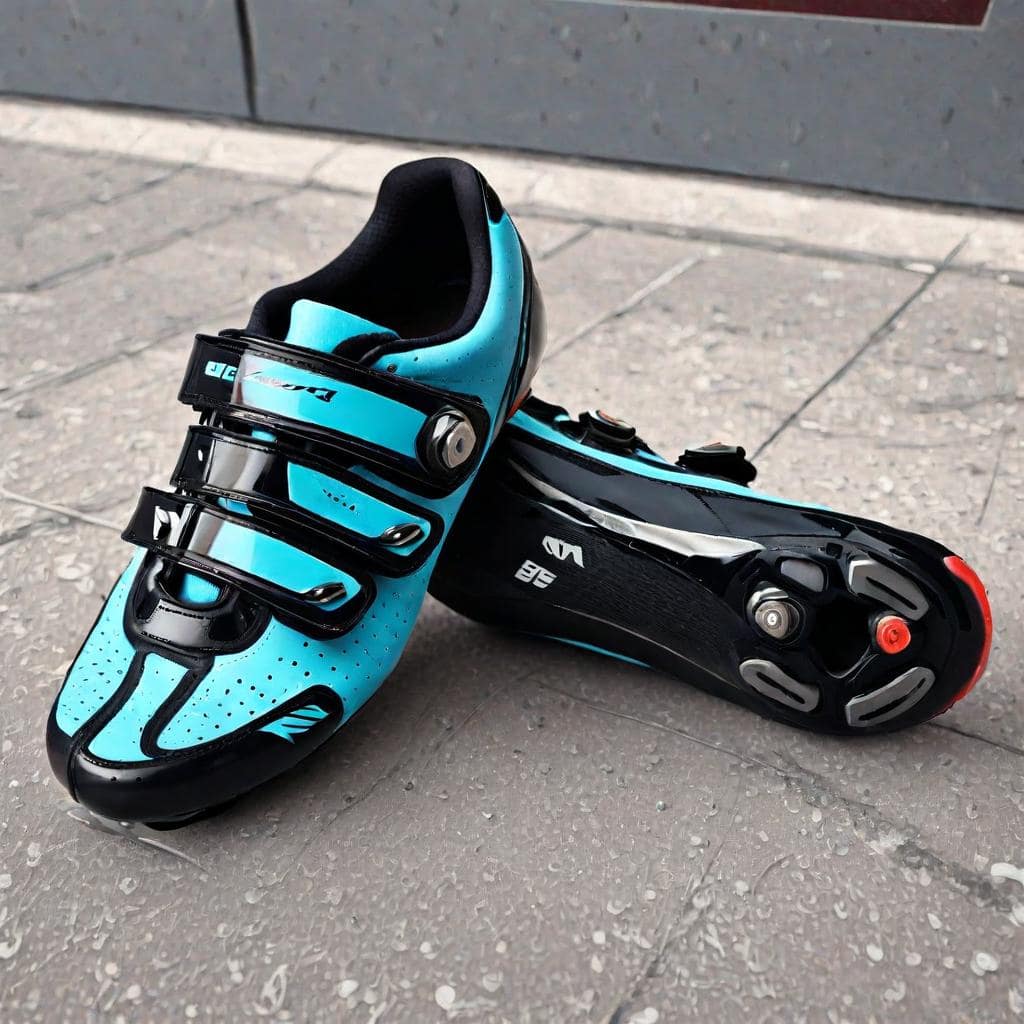When I first started cycling, I was wondering what to wear bike ride For starters, you don’t need to run out and buy a bunch of cycle clothing to enjoy riding. You can still look cool without breaking the bank. During the summer, feeling comfortable is key, and bike-specific clothing can help improve your riding comfort and performance.
Another important aspect is visibility to motorists. Not all bike clothing is designed to grab attention. Some brands are designing clothes that can double as streetwear, so you can go from your ride to a casual outing without changing.
This approach focuses on general cycling strategies, but if you’re interested in more specific types of riding, there are separate articles on topics like “What to wear to mountain bike.
It discusses different clothing options suitable for mountain biking.
Repurpose Other Outdoor or Athletic Clothing
You can cut costs on bike clothing by using casual outerwear or athletic wear. Think of breathable and moisture-wicking fabrics for your ride. It’s a good idea to add reflective elements to your outfit, especially if you’re cycling where vehicles are present.
On a mountain-bike-only trail, this might be less necessary, but reflectivity becomes very important in colder and darker weather.
For instance, jackets and pants with reflective patches can significantly increase your visibility. Ideally, you want the driver to be able to see the reflective element or bike light from any angle. When it comes to safety, more reflectivity is always better.
Bike Helmet

A helmet is essential bike clothing that every cyclist needs to wear. When selecting a helmet, you can choose one based on the type of riding you do. Any bike helmet can work for different types of riding, but it’s important to find one that fits well. For more details, you can learn how to choose a bike helmet.
Over time, helmet designs have evolved, offering more stylish options. However, no design fully solves the issue of helmet hair.
Sunglasses provide crucial protection against windblown debris and UV rays. It’s important to have a good pair of wraparound sunglasses as they offer extended coverage and work well for cycling.
You can learn how to choose sunglasses for your rides. If you have a mountain bike helmet, you might want to get goggles to wear with it for additional protection.
Combining these items will not only ensure safety but also add comfort and style to your cycling experience.
- Related Post
- How to Tighten a Bike Chain
Bike Shorts

Bike shorts are essential for any cyclist. Bike shorts use stretch fabrics for easy movement while pedaling. Unlike casual shorts, they are cut longer and often include gripper elastic in the leg openings to keep them securely in place.
The chamois is the most important and complex part of bike shorts. This synthetic chamois is a padded crotch piece that reduces friction and wicks away moisture. Chamois come in various shapes, thicknesses, and materials. Some gel chamois in mountain bike shorts offer excellent cushioning but are less breathable than non-gel styles. You might need to try riding with or without a chamois to decide which is more comfortable for you.
Cycling underwear, or liner shorts, are also a great option. Designed for high-exertion activities, cycling underwear uses flexible fabrics and wicking materials that dry quickly. Most cycling underwear includes a built-in chamois for better comfort during your ride. Liner shorts can be worn under your favorite pants or shorts, turning any bottle into a bike-ready outfit. This strategy can also save you a few dollars while ensuring comfort on your ride.
By investing in the right bike shorts and cycling underwear, you can significantly improve your riding experience. The combination of stretch fabrics, gripper elastic, and a well-designed chamois will keep you comfortable and focused on the road.
Other styles of bike shorts:
Skorts: A mashup of shorts and skirts, skorts offer an alternative style that pairs stretch shorts with an outer skirt. Cycling skirts are also designed to be worn over your cycling shorts or cycling underwear.
Bib Shorts: Bibs are popular with racers because they don’t have a waistband to restrict breathing. No rule says a casual rider can’t wear bibs to be more comfortable.
Known as baggy or double shorts, mountain bike shorts consist of loose outer shorts paired with stretch liner shorts with built-in chamois. These liner shorts can often be detached and worn separately or with other bike shorts. Mountain bike shorts are made with durable outer fabric and have lots of pockets, but they typically have few reflective elements.
Bike Pants, Tights and Warmers

Alternative to bike shorts: For cooler temperatures, bike pants and tights are great options. Many come with a built-in chamois for comfort. Front panels offer wind protection, and some pants are even waterproof and windproof. Tights might be less weather-protective but are more aerodynamic.
Commuter/Casual Pants: These cycling pants look like streetwear, so riders can blend in at any urban destination. These designs include cycling-specific features such as stretch fabric and a cuff on the chain side pant leg that can be rolled up to expose reflective trim. This helps prevent the cuff from getting caught in the chain. They are also stylish enough to wear off the bike.
Bike Jerseys

When choosing bike jerseys for your ride, look for ones that are stretchy, especially road jerseys. These are breathable, moisture-wicking, and quick-drying. Most road jerseys have a form-fitting and aerodynamic cut, which distinguishes them from mountain bike jerseys. For a more relaxed look, you can find many casual shirt styles that don’t resemble traditional bike jerseys at all.
Other jersey features include:
- A tall or flip-up collar to shade your neck from UV rays.
- Front zipper allows for ventilation as your exertion level increases.
- Shoulders cut wider for arms-forward comfort.
- Back pockets for easy on-the-go access.
- Longer cut in back for coverage when you lean on the bike.
- Reflective trim or material for night riding.
Additional jersey features for cold weather:
- Long sleeves provide extra warmth and coverage.
- Denser and heavier fabric weaves with a brushed lining add insulation.
Cycling Arm and Leg Warmers
Cycling arm and leg warmers are handy for tweener-weather rides. These accessories can be used on the fly to provide added warmth for your legs and arms. Adding lightweight warmers is a great way to protect your arms and legs from UV rays on hot days.
You may also like to read How Long Does It Take to Bike 10 Miles?
Cycling Jackets

When picking a cycling jacket, there are a few important considerations. First, it should block the wind and keep you dry. Different jackets perform these tasks to varying degrees, so think about the likelihood of rain during your rides. Some jackets also provide more warmth, which is crucial if you ride in a colder climate or during the winter months.
How much rain do you anticipate?
If you expect serious rain, a waterproof jacket will offer the best protection. For a high-exertion activity like riding, you’ll need waterproof and breathable technologies such as GORE-TEX® fabrics. If rain is only an occasional concern, a water-resistant jacket is fine and usually offers better breathability than more expensive waterproof/breathable jackets.
Hoods: Some jackets have detachable or stowable hoods. If you choose a jacket with a helmet-compatible hood, make sure to try it with your helmet to see how it fits and whether it restricts visibility.
Zip-off sleeves: Convertible bike jackets come with this handy feature. It allows you to change your jacket into a vest if the weather eases up.
Cold weather considerations: The jacket you need for winter riding in Chicago is different from one for winter riding in Phoenix. Warmer jackets have thicker material and often a brushed liner for added insulation. Avoid overdressing as you will warm up from exertion during your ride. You can also wear a warm layer under any jacket. For more cold-weather advice, check out Tips for Winter Bicycling.
Bike Shoes

The type of bike shoes you need will be determined by the type of pedals on your bike. If you have basic platform pedals, you can wear almost any type of shoes. However, cycling shoes, even a basic pair, have much stiffer soles than street shoes or hiking footwear. This sole stiffness helps with better power transfer when you pedal.
If your bike has clipless pedals, you will need bike shoes with soles that can engage with those pedals. Your shoes must match the type of pedals you use. Your shoes must be compatible with your style of pedals. This ensures a secure connection and an efficient riding experience.
Shoe covers: For wet or rainy rides, foot covers (covering from arch to toe) or full shoe covers (covering the entire shoe and part of the ankle) are great for keeping your feet warm and dry. In stormy weather, consider wearing waterproof cycling socks for extra protection.
Bike Socks
Your feet can sweat a lot when you’re pedaling. In cold weather, this can lead to cold feet, and in hot weather, it can cause blisters. The best socks for biking are made of synthetic materials like polyesters or nylons that help wick away perspiration. Merino wool is another natural material that offers good performance. Avoid cotton socks for anything but light workouts.
While you can use any performance socks for cycling, bike socks have subtle details that make them different. They have thinner material to allow a bike shoe to fit more snug, which helps with power transfer to the pedals.
Accessory Items
When preparing for winter rides, consider using caps or skullcaps for extra insulation. A headband is also a good option to keep your ears warm. For your hands, cycling gloves with padding help absorb road and trail vibrations. These are a better option than repurposing other gloves. Most bike gloves have a leather or synthetic-leather palm and a moisture-absorbing terry cloth patch for dabbing sweat or a runny nose.
In summer, fingerless bike gloves are popular. For cold-weather rides, a pair of wicking, breathable, full-finger bike gloves is a must. These gloves also offer protection against the wind and rain. For even greater warmth, use thin liner gloves inside your other gloves.
Another option for severe cold is using pogies, an accessory that lets you slide your hand inside to grip the handlebar.
What do you wear when you ride a bike?
When planning your bike riding outfits, comfort is key. Choose fabrics that are durable and easy to move in. What you wear often depends on where you’re going. For running errands, try a t-shirt, leggings, and sneakers. You can add a sweatshirt that can be removed and tucked into your bike basket or backpack if needed.
If you’re heading somewhere dressier like a museum or work, go for versatile pieces. A good example is a pair of solid-colored stretchy pants with a fancy top. It’s also important to wear shoes like sneakers or flats with a sturdy sole, as you’ll be pedaling.
What not to wear when riding a bike?
Avoid tight-fitting clothing such as skinny jeans or baggy items as the fabric can catch on the pedals. Additionally, avoid excessively long pieces as they can brush against the wheels and become damaged. If you’re a dress lover, choose skorts instead for bike riding.
These can be paired with a knit or cotton top for an easy alternative that can work for many occasions. This ensures you stay comfortable and safe while cycling without compromising on style.
How can I look stylish while cycling?
- Choose comfortable pieces that make you feel your best.
- Choose lightweight jewelry that is not too heavy or dangling.
- Keep your hair in place with accessories like headbands, claw clips, or scrunchies.
- Wear sunglasses to protect your eyes while you’re biking outside and to look stylish.








